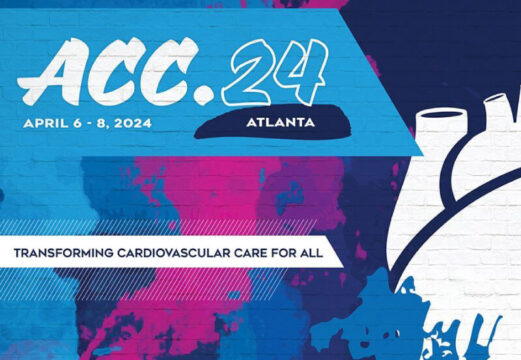Original Title: Fractional flow reserve vs. angiography in guiding management to optimize outcomes in non-St segment elevation myocardial infarction: the British Heart Foundation FAMOUS–NSTEMI randomized trial. Reference: Jamie Layland et al. European Heart Journal (2015) 36, 100–111
Courtesy of Dr. José Amadeo Guillermo Álvarez.
Several studies have established the value of fractional flow reserve (FFR) in guiding PCI for patients with stable coronary disease. However, this has not clearly been established for patients with ACS, where the main concerns are that the possible alteration of the microvascular bed may not allow maximum vasodilation required to measure, or that plate instability may cause events, regardless the level of obstruction.
The FAMOUS-NSTEMI study randomized 350 NSTEMI patients and at least one stenosis ≥ 30% to angiography guided vs. FFR guided management. The angiographic study was done at a mean time of three days after ischemia and, even though FFR was measured in all patients, it was informed only in one of the groups.
Results
At one year follow up, primary end point defined as the number of patients that had initially received medical treatment alone, was significantly higher in the FFR group [40 (22.7%) vs. 23 (13.2%, difference 9.5% (95% CI: 1.4%, 17.7%), P . 0.022]. This difference persisted after 12 months follow up [79.0 vs. 86.8%, difference 7.8% (20.2%, 15.8%), p= 0.054.
As regards clinical events, there was a tendency towards more MI associated to revascularization (PCI or CABG) in the angiography guided group (6.3% vs 2.8% p=0.12) and more major cardiac events, excluding peri-intervention infarction, in the FFR group (5.7% vs 2.9% p=0.25)
Commentary
In NSTEMI acute coronary syndromes, although there are concerns regarding the influence of plate instability related events over the possibility to achieve maximum hyperemia, some studies suggest that measuring fractional flow reserve could be a valid alternative for both intermediate culprit lesion assessment, and as a complete revascularization strategy for patients with multivessel disease. In the FAME study, the third part of the included population had unstable angina or non-STEMI and, even though their two year evolution saw more events than the stable angina population, the difference in favor of FFR was similar. In the FAMOUS-NSTEMI, the angiography + FFR guided group, where the study was done at a mean time of 3 days after the most recent episode of pain, after 12 months, more patients received medical treatment alone with similar incidence of adverse major cardiac events; however, given the low events rate and the small number of patients, the trial has no statistical power to detect differences in the latter, which is why we should not make conclusions on this regard. Further research is required to define the role of FFR in unstable patients.
Courtesy of Dr. José Amadeo Guillermo Álvarez.




